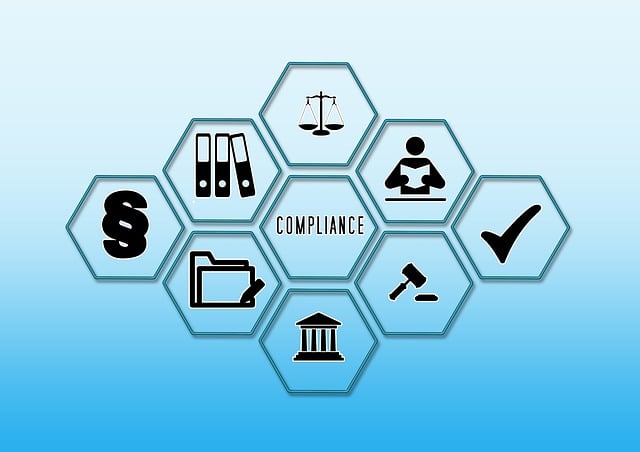Many businesses in transportation struggle with Select DOT Compliance, facing challenges like missing CDL requirements or ignoring vehicle inspections, leading to penalties, legal issues, and reputational damage. By understanding these issues, companies can turn them into growth opportunities through enhanced transparency, safety, and accountability. This involves analyzing existing processes, implementing best practices, and fostering a culture of safety. Embracing creativity in problem-solving helps transform potential problems into chances for innovation, such as digital record-keeping or proactive accident investigation procedures, ultimately boosting efficiency, reducing risks, and enhancing industry reputation.
Transform challenges into golden opportunities with the power of strategic thinking. This article guides you through a comprehensive journey, from understanding the profound impact of compliance challenges to unveiling hidden potential. We explore a strategic approach to identifying dot opportunities, fostering creative problem-solving skills, and presenting compelling case studies.
Learn a step-by-step guide to implementing and measuring change, empowering you to navigate Select DOT Compliance with success and turn obstacles into stepping stones for growth.
- Understanding the Impact of Compliance Challenges
- Identifying Dot Opportunities: A Strategic Approach
- The Art of Creative Problem-Solving
- Case Studies: Successful Transformations
- Implementing and Measuring Change: A Step-by-Step Guide
Understanding the Impact of Compliance Challenges

Many businesses, especially those operating within the transportation and logistics sector, often face significant challenges when it comes to Select DOT Compliance. These challenges are not merely administrative hurdles; they directly impact operational efficiency, safety, and overall success. Non-compliance with Department of Transportation (DOT) regulations can lead to severe penalties, legal issues, and damage to a company’s reputation. For instance, failing to meet commercial driver’s license (CDL) requirements or neglecting regular commercial vehicle safety inspections can result in costly delays, accidents, and even loss of licenses for drivers.
Moreover, the regulatory compliance for carriers extends beyond individual drivers; it encompasses every aspect of a company’s operations. From maintaining accurate records to adhering to specific routing guidelines, every detail contributes to a comprehensive compliance strategy. By understanding these challenges and their potential consequences, businesses can proactively transform them into opportunities for growth and improvement. This shift in perspective enables companies to enhance their operational transparency, strengthen safety protocols, and foster a culture of accountability.
Identifying Dot Opportunities: A Strategic Approach

Identifying DOT opportunities requires a strategic approach that aligns with Select DOT Compliance standards. Organizations should conduct thorough risk assessments to pinpoint areas where challenges can be turned into advantages. By evaluating existing processes, procedures, and industry best practices, companies can uncover potential for enhancement and innovation. For instance, analyzing truck stop safety initiatives or developing comprehensive emergency preparedness protocols can mitigate risks and create new opportunities for growth.
Implementing robust safety training programs for truck drivers is a prime example of identifying DOT opportunities. Such programs not only ensure compliance with regulatory requirements but also foster a culture of safety within the organization. By focusing on continuous improvement, companies can turn challenges into strategic advantages, ultimately enhancing their operational efficiency and reputation in the industry.
The Art of Creative Problem-Solving

In the realm of transportation operations, challenges are inevitable, but it’s how we approach and tackle them that sets apart the successful from the rest. The Art of Creative Problem-Solving is a game-changer in navigating through obstacles to seize opportunities for growth and improvement. By selecting DOT compliance as a strategic foundation, organizations can transform potential pitfalls into thriving landscapes. This involves a shift in perspective—viewing challenges as stepping stones to innovation rather than roadblocks. For instance, adhering to the stringent dot hazardous material guidelines not only ensures safety but also opens doors to more efficient logistics planning, fostering an environment conducive to creative problem-solving.
Transportation safety training programs play a pivotal role in empowering employees with the knowledge and skills to navigate complex scenarios. These initiatives, when integrated into the fabric of daily operations, become catalysts for identifying and mitigating risks, ultimately leading to better decision-making processes. Moreover, truck stop safety initiatives can be leverages as strategic checkpoints where teams pause to reflect, share insights, and collaboratively develop solutions, enhancing overall operational resilience.
Case Studies: Successful Transformations

In the realm of commercial trucking and logistics, transforming challenges into opportunities has proven to be a game-changer for many companies. Case studies highlight that success often lies in meticulous planning and embracing innovative strategies. For instance, consider a company facing issues with maintaining accurate commercial vehicle maintenance records. By implementing digital record-keeping systems, they streamlined their processes, ensuring compliance with Federal Motor Carrier Safety Administration (FMCSA) guidelines. This not only improved efficiency but also reduced the risk of penalties associated with non-compliance.
Another compelling story involves a firm that successfully navigated a major accident investigation by adopting a proactive approach. By closely adhering to DOT accident investigation procedures, they conducted thorough internal audits, identified weaknesses, and implemented rigorous safety protocols. This proactive stance not only mitigated potential legal consequences but also enhanced their reputation as a responsible carrier. These examples illustrate how challenges can be turned into strengths, fostering growth and improvement within the industry.
Implementing and Measuring Change: A Step-by-Step Guide

Transforming challenges into opportunities is a strategic approach that can significantly impact businesses and industries. When it comes to implementing and measuring change, especially in highly regulated sectors like transportation, a structured plan is essential. Here’s a step-by-step guide to help navigate this process effectively:
1. Assess the Challenge: Begin by thoroughly understanding the challenge at hand. For instance, ensuring DOT compliance in commercial vehicle safety inspections involves keeping up with evolving regulations and standards. This step is crucial as it identifies the scope of work required for transformation.
2. Set Clear Objectives: Define measurable goals that align with your strategic objectives. In the context of regulatory compliance for carriers, these goals could include reducing inspection failures by 20% within six months or implementing advanced transportation safety technology to enhance driver awareness.
3. Develop a Comprehensive Strategy: Create an actionable plan incorporating various tactics. This might involve training drivers on new procedures, investing in modern equipment for safer inspections, and utilizing data analytics to predict and address potential issues. By integrating different strategies, you can tackle the challenge from multiple angles.
4. Implement and Monitor Progress: Put your strategy into action and track key performance indicators (KPIs) related to your objectives. Regularly review inspection reports, driver training feedback, and technology integration success rates. This ongoing monitoring ensures that your efforts remain on track and identifies any necessary adjustments.
Challenges, especially those related to compliance, can be transformative if approached strategically. By adopting a creative problem-solving mindset, organizations can uncover hidden opportunities for growth and innovation. Through case studies, we’ve demonstrated that successful transformations are achievable by implementing a structured process. This includes identifying DOT Compliance issues, fostering a culture of strategic thinking, and using these challenges as stepping stones to enhance operational efficiency and adapt to the ever-changing landscape. By following a step-by-step guide for implementation and measurement, businesses can not only overcome hurdles but also thrive in an evolving market.
